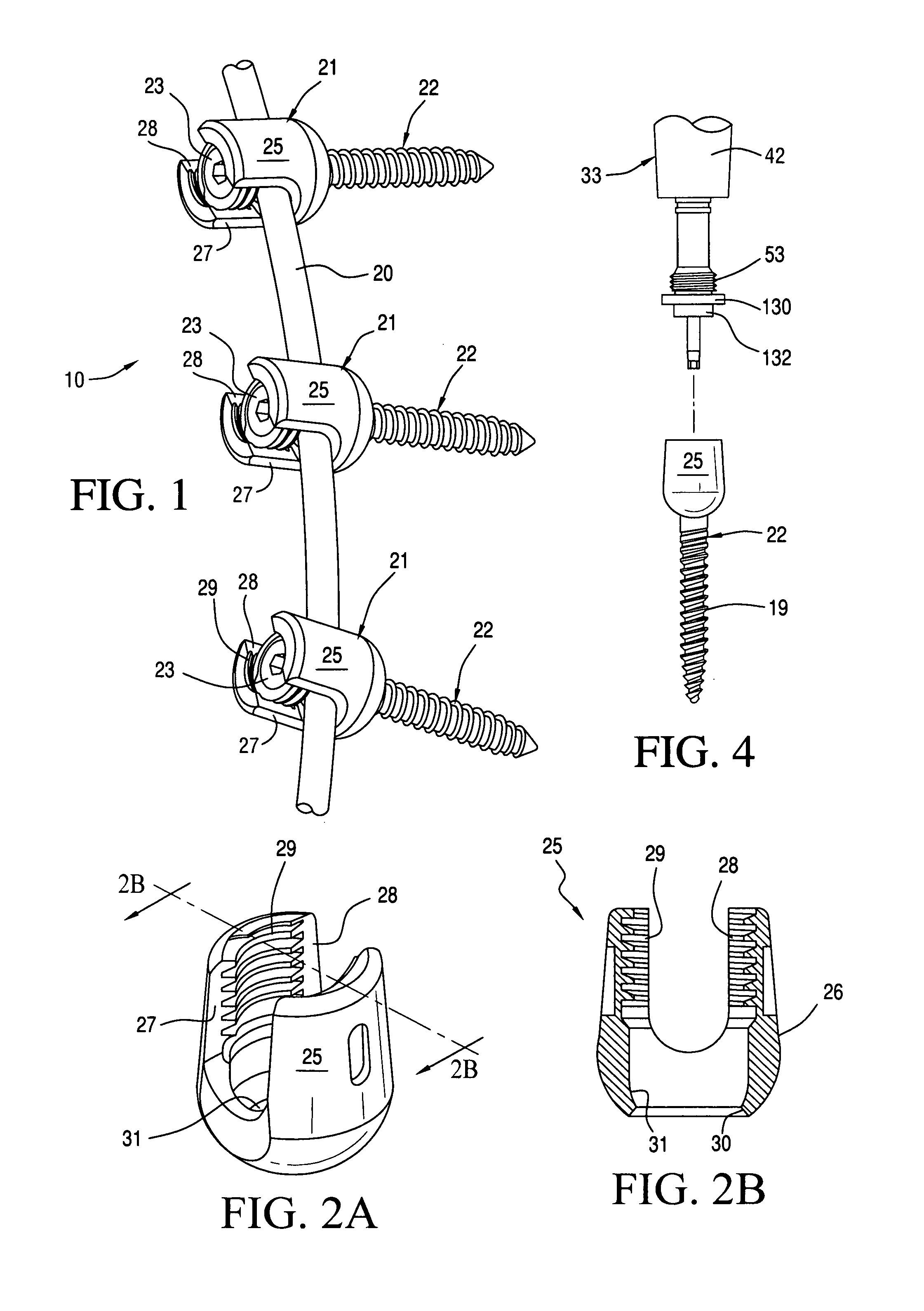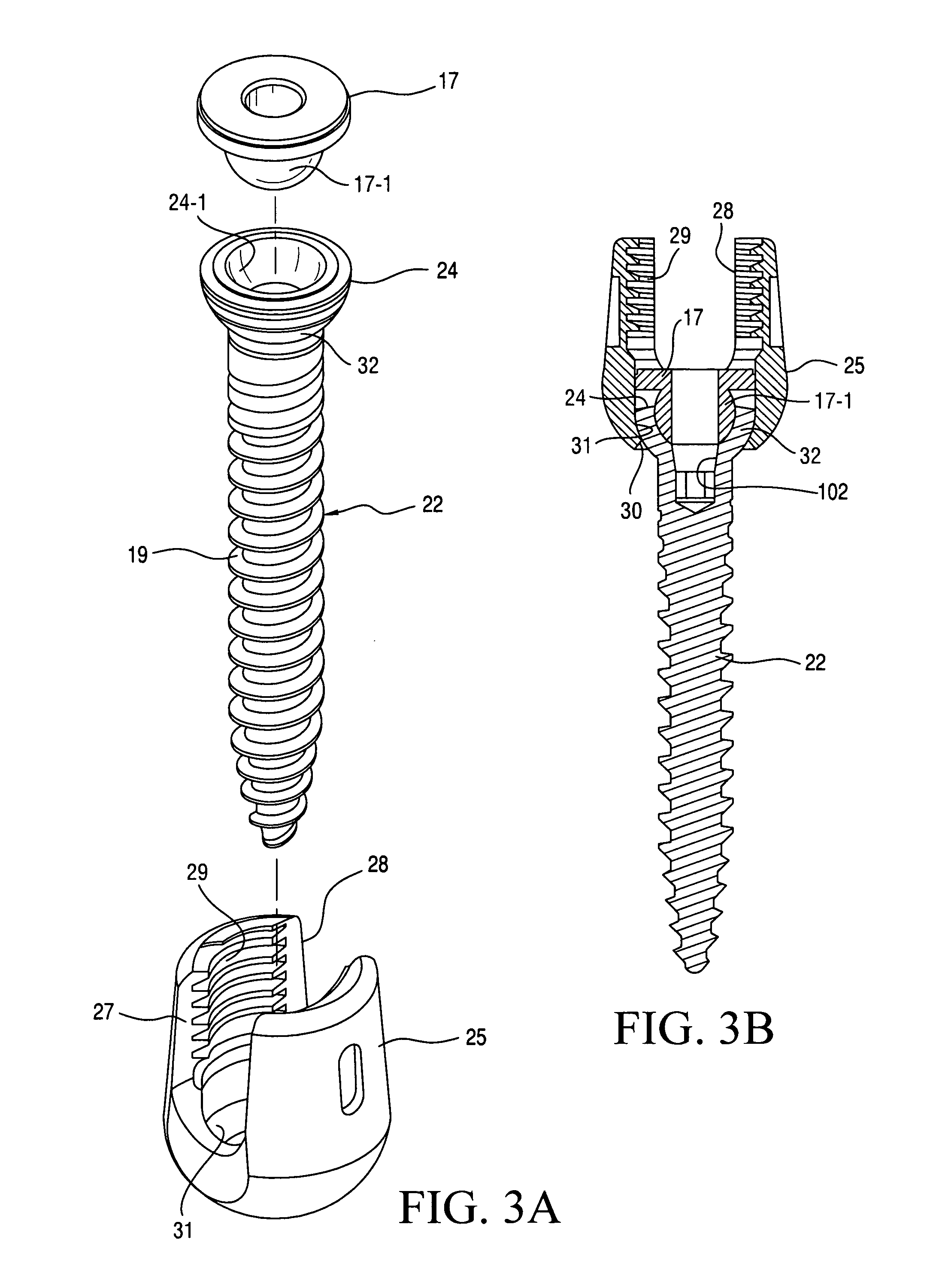Spinal fixation system and screwdriver tool for use with the same
a fixation system and screwdriver technology, applied in the field of spine fixation system and screwdriver tool for use with the same, can solve the problems of poor, safe and secure placement of pedicle screws, affecting the accuracy of computer calculations, and affecting the patient, so as to improve the flow of bone cement through the screw, and prevent muscle or other tissu
- Summary
- Abstract
- Description
- Claims
- Application Information
AI Technical Summary
Benefits of technology
Problems solved by technology
Method used
Image
Examples
Embodiment Construction
[0056]An exemplary spinal fixation system 10 is shown in accompanying FIG. 1. As depicted, the system 10 includes a composite rod 20 that is as strong as metallic spinal rods of like cross-sectional dimensions and length but, depending on the length, characteristics and amount of fiber embedded in the plastic, can be engineered to permit limited degrees of flexibility for reasons hereinafter described in more detail. See in this regard, U.S. Patent Application Publication Nos. 2008.0262548 and 2010 / 0042163 (the entire contents of each being expressly incorporated hereinto by reference).
[0057]As is well known in the art, the rod 20 will have a contour generally the same as that portion of the spine to be treated and will ultimately be located in a position generally parallel to that portion of the spinal column under treatment.
[0058]A series of pedicle screw / tulip assemblies 21 are secured to the rod 20. The screws 22 thereof are polyaxial—that is, their heads 24 are mounted for univ...
PUM
 Login to View More
Login to View More Abstract
Description
Claims
Application Information
 Login to View More
Login to View More - R&D
- Intellectual Property
- Life Sciences
- Materials
- Tech Scout
- Unparalleled Data Quality
- Higher Quality Content
- 60% Fewer Hallucinations
Browse by: Latest US Patents, China's latest patents, Technical Efficacy Thesaurus, Application Domain, Technology Topic, Popular Technical Reports.
© 2025 PatSnap. All rights reserved.Legal|Privacy policy|Modern Slavery Act Transparency Statement|Sitemap|About US| Contact US: help@patsnap.com



